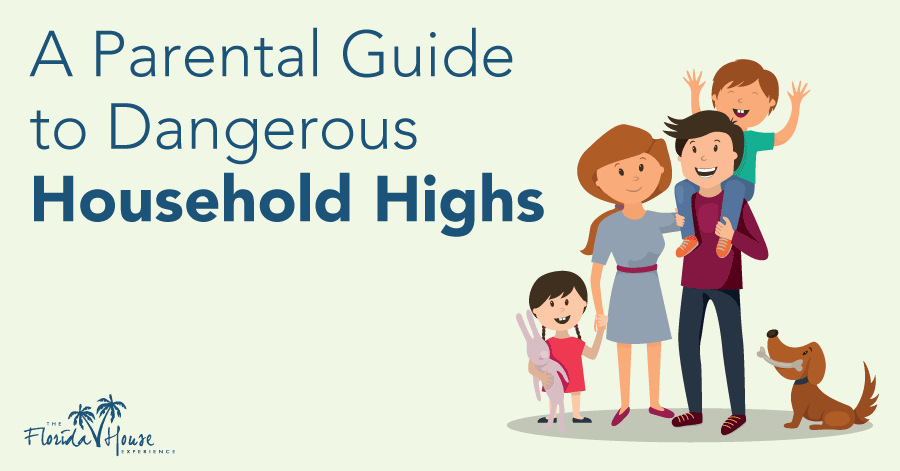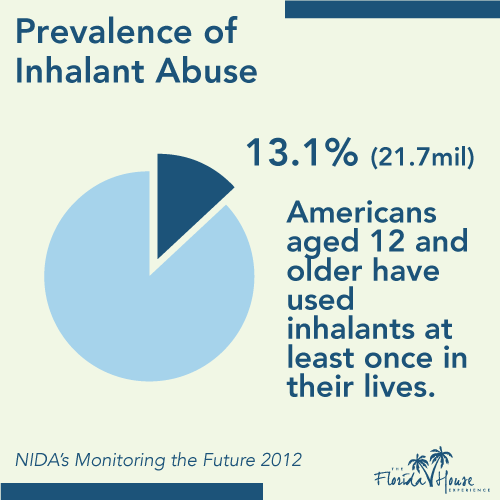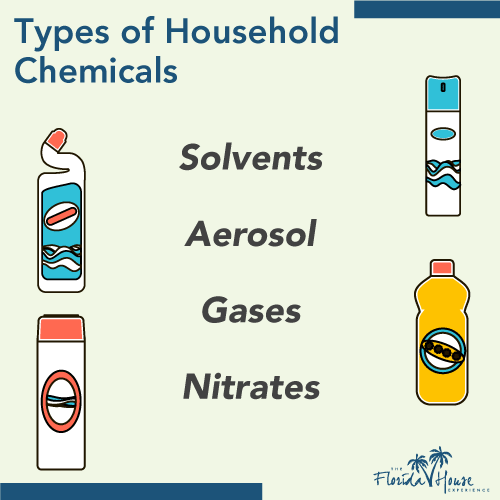
Most parents take the time to discuss the dangers of drugs with their children and teach them to resist peer pressure. Teaching your kids how to say no is important, but you also need awareness of home-based dangers. There may be household drugs in your cabinets that pose as much risk to your children as your local dealer. Knowing about these substances and their dangers is half the battle.
The Dangers of Household Chemicals
 You’re probably diligent about keeping prescription narcotics secure and having regular conversations with your kids about alcohol and tobacco. Discussing the dangers of abusing household chemicals is just as crucial.
You’re probably diligent about keeping prescription narcotics secure and having regular conversations with your kids about alcohol and tobacco. Discussing the dangers of abusing household chemicals is just as crucial.
According to the National Institute on Drug Abuse (NIDA), 13.1 percent of kids have tried inhalants by the time they reach the 8th grade. Inhalants should be of particular concern to parents because teens and children have regular access to them and often don’t understand the dangers because inhaling chemicals creates a sort of legal high.
What Chemicals Should Be Treated as Household Drugs?
Many chemicals have the potential to create a high when abused, so there are no hard and fast rules when it comes to identifying potential household highs. There are, however, four types of chemicals that are most likely to be abused by teens or younger children.
Solvents
Chemicals classified as solvents are typically used for dissolving substances for cleaning or alternative applications. Common products found in this category include glues, paint thinners, liquid paper products, lighter fluid, fluid from felt-tipped markers and gasoline.
 Aerosols
Aerosols
Aerosols are chemicals under high pressure that spray a fine mist from a can, often using propellant gas. Some aerosols you may find in your home are spray paints, vegetable oil sprays, hair spray, spray deodorant and aerosol keyboard cleaners.
Gases
Most gases are easily recognizable as dangerous, such as propane or the butane used to refill certain types of lighters. However, a more common source for abuse comes from cans of whipped cream. The gas used to propel the cream can cause a temporary high when inhaled, and these products are commonly referred to as whippets. Although not a staple in every household, certain types of anesthesia, such as ether or nitrous oxide, can also be used as inhalants.
Nitrites
These can be found in innocuous household products and are often sold in small brown bottles. Possible labels include liquid aromas, room odorizers, leather cleaners or video head cleaners. This particular category of household drugs is most often used by older adolescents and adults.
Common Abuse Methods
There are several ways household chemicals are inhaled to achieve a legal high. To be the best advocate for your kids, it’s important to recognize each of these methods so you can identify if your children are experimenting with inhalants. It’s also important to teach your kids that each of these methods involves significant risk of damage to their bodies and brains. No recreational inhalant is safe.
- Snorting/sniffing: the user inhales the chemicals from the original container
- Spraying: the user sprays the chemical directly into the mouth or nostrils, often the method used for abusing aerosols
- Bagging: the chemical is used to saturate a bag which is then put over the nose and mouth and inhaled
- Inhaling: generally used for high-pressure chemicals and gases, the substance is released into a balloon and inhaled through the mouth of the user
- Huffing: the chemical is used to saturate a rag or cloth, which is then brought up to cover the mouth and nose as the user inhales
Effects of Abusing Household Chemicals
Inhaling household drugs causes damage to the mind and body. The effects on teens and young children can be irreparable, even over a short time. Overdose is a risk, and seizures, coma or even the sudden heart failure are all possible. The last is known as sudden sniffing death. According to the NIDA, likely damage to the body and brain can include:
- Nervous system
- Kidneys
- Liver
- Bone marrow
- Hearing
- Behavioral development
- Motor skills and coordination
- Brain function
How to Identify Abuse of Household Drugs
Children and teens who abuse inhalants will often show clues in their appearance, behavior and social circle. Early experimentation may not be as obvious, so it’s important to know what to look for. To identify if your child or someone they know is abusing household chemicals, here are several signs:
- A chemical odor around the face or on the breath
- Unexplained paint residue on the face, especially around the nose and mouth
- Empty bags or rags with chemical residue, left about without explanation
- An unusual number of empty aerosol or compressed air cans
- Loss of appetite
- Slurred speech
- Disorientation
- Dilated pupils
- Exhaustion
- Inability to focus
- Lowering of inhibitions
Prevention
As with any danger to a loved one, prevention is the best way to keep them safe. Make sure dangerous household chemicals are locked away from small children. Make sure to only use them in well-ventilated areas. Explain to your younger ones that household chemicals are poisonous and should never be inhaled or ingested.
Talk to older kids about the dangers of abusing inhalants and explain that a legal high does not mean a safe high. Make sure they understand inhalant addiction is just as serious as well-known street drugs and the consequences can be just as deadly. Keep the line of communication open. Allow them to ask questions without judgment, and take the opportunity to learn more about the risks together.
If you suspect a loved one of abusing household drugs, seek help quickly. You can contact our knowledgeable counselors any time of the day or night to help guide you through treatment options. We’ll be there for your child even after treatment is completed to ensure the best chance at a full recovery. Call us today at (833) 596-3502, and let us be a part of your child’s support system.






